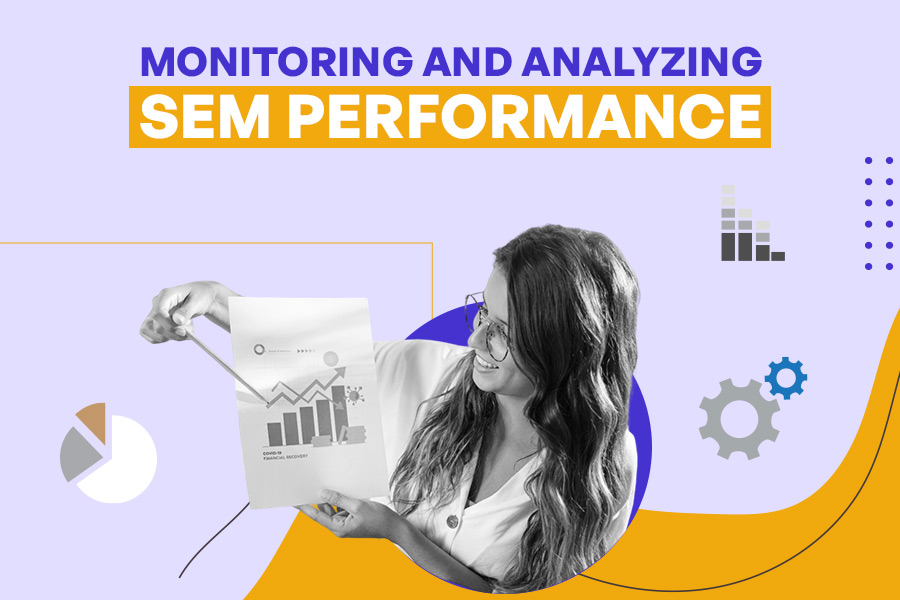Introduction
In today’s digital age, the online marketplace has become more competitive than ever. With an increasing number of businesses vying for consumer attention, it’s crucial to stand out and make a lasting impression. Search engine marketing (SEM) has emerged as a powerful tool to help businesses reach their target audience and drive sales.
Recognizing the growing importance of SEM, Jay Mehta, a renowned digital marketing expert, decided to write this comprehensive guide to share his insights on the most important factors to consider when optimizing SEM campaigns.
As internet usage continues to soar, with billions of users worldwide as of 2023, businesses must adapt and leverage the power of SEM to stay ahead of the competition.
Recent studies reveal that 93% of online experiences begin with a search engine, highlighting the significance of search engine visibility for driving brand awareness and sales. SEM has the potential to deliver targeted, high-converting traffic to businesses, often yielding better results than traditional marketing methods.
This guide aims to equip businesses with the knowledge and strategies needed to optimize their SEM campaigns effectively and outshine their competitors in the digital space. In this comprehensive guide, Jay Mehta shares his insights on the most important factors to consider when optimizing your SEM campaigns.
From improving ad quality score and relevance to leveraging effective keyword research, crafting compelling ad copy, implementing targeting strategies, and monitoring campaign performance, this guide covers every aspect of SEM optimization. So, without further ado, let’s dive in and explore these essential factors for maximizing your SEM campaign success.
Ad Quality Score and Relevance

A. The concept of ad quality score and its impact on SEM campaigns
Ad quality score is a crucial factor in determining the performance of your ads. Google Ads, for instance, uses a 1-10 scale to rate the quality and relevance of your keywords, ad copy, and landing pages. A higher quality score leads to better ad rankings, lower costs-per-click (CPC), and improved overall performance. As Jay Mehta emphasizes, focusing on ad quality score is vital for maximizing your SEM campaign success.
B. The importance of ad relevance
Ad relevance refers to how closely your ads match the intent of the users searching for your targeted keywords. Ensuring ad relevance is essential for improving your ad quality score and driving better results from your SEM campaigns. Jay Mehta suggests that focusing on the user’s intent and aligning your ads with their needs will yield better results.
C. Tips to improve ad quality score and relevance
- Perform thorough keyword research to find relevant keywords for your target audience (check out Jay’s guide on effective keyword research for SEM campaigns).
- Create ad copy that speaks directly to the users’ needs and includes your targeted keywords.
- Design landing pages that provide valuable information and a seamless user experience (UX).
Effective Keyword Research and Selection

A. The role of keywords in SEM campaigns
Keywords are the foundation of your SEM campaigns, as they determine when and where your ads will be displayed. Selecting the right keywords is crucial for driving relevant traffic to your website and ensuring a strong return on investment (ROI). Jay Mehta highlights the importance of conducting thorough keyword research and analysis the most effective keywords for your campaigns.
B. Long-tail vs. short-tail keywords
Long-tail keywords are longer, more specific phrases that generally have lower search volumes and competition, making them easier to rank for. Short-tail keywords, on the other hand, are shorter, broader terms with higher search volumes and competition. Jay Mehta recommends focusing on long-tail keywords to target more specific, high-converting traffic.
C. Strategies for effective keyword research and selection
- Use keyword research tools, such as Google Ads Keyword Planner or SEMrush, to find potential keywords.
- Analyze the competition to identify keyword gaps and opportunities.
- Group your keywords into relevant ad groups for better organization and targeting.
Crafting Compelling Ad Copy

A. The importance of persuasive ad copy
Your ad copy is the first point of contact between your brand and potential customers. Well-crafted, persuasive ad copy can significantly improve your click-through rates (CTR) and conversions. Jay Mehta underscores the importance of writing compelling ad copy that resonates with your target audience and encourages them to take action.
B. Tips for writing effective headlines and descriptions
- Use your primary keyword in the headline and description to improve ad relevance.
- Highlight the unique selling points of your products or services.
- Leverage emotional triggers and power words to capture attention.
C. Implementing a strong call-to-action
A strong call-to-action (CTA) encourages users to take the desired action, such as clicking on your ad or signing up for your newsletter. Jay Mehta suggests that a clear and concise CTA is crucial for driving conversions and improving your ad performance.
- Use action-oriented language to create a sense of urgency.
- Make your CTA specific and relevant to the user’s intent.
- Test different CTAs to determine which one yields the best results.
Targeting Strategies

A. Geographic and demographic targeting
Targeting your ads to specific geographic locations and demographics can help you reach the most relevant audience and improve your campaign performance. Jay Mehta emphasizes the importance of tailoring your ads to the preferences and needs of your target audience.
- Use location targeting to display your ads to users in specific countries, regions, or cities.
- Leverage demographic targeting to reach users based on factors like age, gender, and income.
- Adjust your bids and messaging based on your audience’s preferences and behaviors.
B. Device and platform targeting
As users access the internet on a variety of devices and platforms, it’s essential to optimize your ads for different experiences. Jay Mehta recommends considering the following strategies.
- Create mobile-optimized ads and landing pages for better UX on mobile devices.
- Use device targeting to adjust your bids and messaging for specific devices or platforms.
- Analyze performance data across devices to identify trends and opportunities for improvement.
C. Ad scheduling and dayparting
Ad scheduling and dayparting allow you to display your ads during specific days and times when your target audience is most likely to engage. Jay Mehta advises taking advantage of these features to optimize your ad spend and campaign performance.
- Analyze historical data to identify peak engagement periods for your audience.
- Schedule your ads to run during these high-impact times.
- Adjust your bids based on time-of-day performance trends.
Bidding Strategies and Budget Management

A. Different bidding strategies and their pros and cons
Choosing the right bidding strategy for your SEM campaigns can significantly impact your overall performance and ROI. Jay Mehta recommends considering the following bidding strategies.
- Manual CPC
You set your maximum CPC for each ad group or keyword. This strategy allows for greater control but requires more hands-on management.
- Automated bidding
Google Ads automatically adjusts your bids based on your campaign goals (e.g., target CPA, target ROAS). This strategy saves time but may not always yield the desired results.
- Enhanced CPC
A hybrid strategy that allows you to set a maximum CPC while allowing Google Ads to adjust your bids to improve conversions.
B. Tips for optimizing bids and budget
- Regularly review your campaign performance to identify areas for improvement.
- Test different bid adjustments to determine the optimal strategy for your goals.
- Allocate your budget based on the performance of individual campaigns or ad groups.
C. Balancing cost-per-click and return on investment
To maximize the effectiveness of your SEM campaigns, Jay Mehta emphasizes the importance of striking a balance between CPC and ROI.
- Focus on high-converting keywords and ad groups to improve ROI.
- Optimize your ad copy and landing pages to reduce CPC and improve ad performance.
- Continuously monitor and adjust your bids based on performance data.
Optimizing Landing Pages

A. The significance of landing pages in SEM campaigns
Landing pages play a critical role in driving conversions and improving your ad quality score. A well-designed landing page can significantly increase your conversion rate and contribute to the overall success of your SEM campaigns. Jay Mehta highlights the importance of creating high-quality landing pages that align with your ads and user intent.
B. Elements of a high-converting landing page
- A clear and compelling headline that captures the user’s attention.
- Relevant and engaging content that addresses the user’s needs and expectations.
- Visually appealing design and layout that guide the user towards the desired action.
- Trust signals, such as customer testimonials, reviews, or case studies, to build credibility.
- Mobile-responsive design to ensure a seamless user experience across devices.
C. Tips for optimizing landing pages to improve user experience and conversions
- Align your landing page messaging with your ad copy to maintain consistency and relevance.
- Simplify your page layout and remove any unnecessary distractions to guide users towards the desired action.
- Optimize your landing page load times to minimize bounce rates and improve user satisfaction.
- Test different landing page elements, such as headlines, CTAs, and images, to identify the most effective combination.
- Monitor and analyze landing page performance data to identify areas for improvement and optimization.
Monitoring and Analyzing SEM Performance

A. The importance of tracking and analyzing campaign performance
Continuous monitoring and analysis of your SEM campaign performance are essential for making data-driven decisions and optimizing your campaigns for success. Jay Mehta recommends regularly reviewing your performance metrics to identify trends, areas for improvement, and opportunities for growth.
B. Key performance indicators to monitor
- Click-through rate (CTR)
The percentage of users who click on your ad after seeing it.
- Cost-per-click (CPC)
The average amount you pay for each click on your ad.
- Conversion rate
The percentage of users who complete a desired action, such as making a purchase or signing up for your newsletter, after clicking on your ad.
- Return on ad spend (ROAS)
The revenue generated from your ads compared to the amount you spent on the campaign.
C. Using analytics tools to make data-driven decisions
Leverage analytics tools, such as Google Ads, Google Analytics, or other third-party platforms, to track and analyze your campaign performance. These tools provide valuable insights into user behavior, ad performance, and conversion data that can help you optimize your campaigns and achieve better results.
Conclusion
Optimizing your search engine marketing campaigns is crucial for driving success in today’s competitive online landscape. By focusing on the key factors discussed in this guide, such as ad quality score, keyword research, ad copy, targeting strategies, bidding and budget management, landing page optimization, and performance monitoring, you can significantly improve your campaign performance and achieve a higher return on investment.
Jay Mehta encourages you to continuously test, learn, and optimize your campaigns for lasting success. We hope you found this guide by Jay Mehta valuable in optimizing your SEM campaigns. We’d love to hear your thoughts, experiences, and questions in the comments below. If you found this post helpful, please consider liking and sharing it with your network.
For more insights and resources on digital marketing, visit Jay Mehta’s blog and explore his extensive advertising resources.
Check out some of his other popular posts:
You can also browse his collection of videos on various digital marketing topics.











